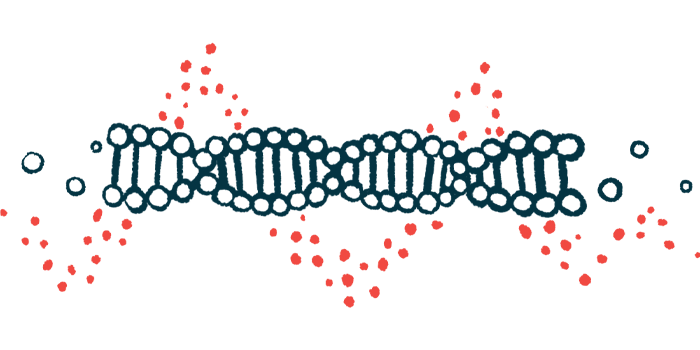Unknown COL5A1 mutation found in man with classical EDS symptoms
21-year-old also has rare disease of skin and organs, history of trauma fractures

A young man with an unusual combination of Birt-Hogg-Dubé syndrome, a rare disease of the skin and organs, and Ehlers-Danlos syndrome (EDS) was found to carry a new mutation in COL5A1, a gene linked to the classical type of EDS, according to a report.
“This mutation could have some clinical significance as this patient did present with symptoms of EDS, not better explained by anything else,” its scientists wrote.
The report, “Presentation and Management of a Novel Ehlers-Danlos COL5A1 Variant With Birt-Hogg-Dube Syndrome: A Case Study,” was published in the journal Cureus.
Man’s ‘unusual constellation of symptoms’ warranted genetic testing
Birt-Hogg-Dubé syndrome is a rare, genetic disease caused by a mutation in the FLCN gene. People with Birt-Hogg-Dubé syndrome grow lesions called fibrofolliculomas on the skin of the face, neck, and chest.
They may also have cysts, sac-like pockets of tissue, form in the lungs and kidneys. A potential for pneumothorax, when air leaks into the space between the lungs and chest wall and collapses of all or part of the lungs, is also known to affect patients.
A pair of scientists in the U.S. described the case of a 21-year-old man with an unusual combination of Birt-Hogg-Dubé syndrome and EDS symptoms possibly caused by a previously unreported mutation.
The man had a history of Hashimoto’s disease, an autoimmune disease that affects the thyroid gland, and hypertension or high blood pressure. Among other heart problems, he had a dilation of the ascending aorta, for which he was taking a daily dose of nebivolol, a beta-blocker.
A dilated ascending aorta is when the beginning portion of the aorta, the large blood vessel that carries oxygen-rich blood away from the heart to body tissues, becomes enlarged. The man was given an annual echocardiogram to monitor changes in dilation.
Over the years, he experienced multiple fractures from falls and a motor vehicle accident. Fractured bones included both wrists, the left patella (kneecap), the left elbow, and the right ankle.
He also had chronic neck pain, with paresthesia (a burning or prickling sensation) in the upper extremities. A CT scan found multiple bulging discs in his neck; bulges occur when a spinal disc — the pad that separates two vertebrae — slips out of place.
The scan also confirmed the presence of a pneumothorax leak, traced to exposure to pepper spray while working as a jail guard. A physical examination revealed a series of fibrofolliculomas spread across the cheeks and neck.
“This unusual constellation of symptoms consisting of multiple fractures, skin lesions, and spontaneous pneumothorax warranted genetic testing to reveal a possible underlying cause,” the scientists wrote.
Test results came back positive for a mutation in FLCN, known as c.1285delC (g.17119709), which was consistent with a diagnosis of Birt-Hogg-Dubé syndrome.
His mother also had a history of Birt-Hogg-Dubé syndrome, with two spontaneous episodes of pneumothorax, fibrofolliculomas on the face, and cysts in the kidneys, sinuses, ovaries, and breasts.
While the man’s kidneys were clear, he “will continue to be monitored for the possible appearance of renal [kidney] cysts,” the scientists wrote.
Clinical significance of newly identified COL5A1 mutation not known
Genetic testing also found a mutation in one copy of COL5A1, which provides instructions for making part of type V collagen, a structural protein of the extracellular matrix that supports and gives shape to tissues.
COL5A1 mutations are among known causes of EDS. But this mutation, called c.3939G>T, has not been reported and its clinical significance is unknown.
The “mutation may be pathologic due to this patient presenting with manifestations consistent with the classical type of EDS,” the scientists wrote.
However, the man has “a history of multiple fractures, which occurred due to low-velocity traumas, and … of chronic neck pain associated with bilateral upper extremity paresthesia. These symptoms are not better explained by any other pathology [disease] and, therefore, could be caused by this COL5A1 mutation,” they added.
A dilated ascending aorta also can occur in up to 6% of people with classical EDS, according to the researchers.
“The presence of these symptoms and the lack of other classical EDS symptoms could be due to the unique presentation of this specific mutation or could be due to the variable expressivity [how the disease manifests in different people],” the scientists concluded.






